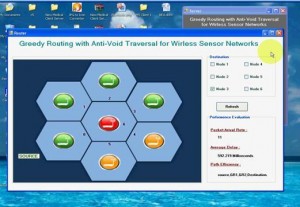The project will analyze the e- money fraud which is a serious problem in the e-banking. Accordingly, some examples of the e-money fraud will be modeled and are then used to develop a tool or a procedure in order to identify the vulnerabilities and risks in the e-banking process. This will not only help in fixing the exploits in the process but also help banks in preventing future exploits. In addition, this tool can be used for testing the e-banking process before they are deployed.
Introduction: Nowadays, there is a significant increase in the use of online banking and most of the purchases by customers are done via internet. There should be a secure way of performing the online transactions. Though some security measures are taken by the banks, we can still see many frauds taking place in the internet banking. This makes it essential to develop an efficient tool that can identify vulnerabilities in the process and prevent them.
Interested Stakeholders:
As this is related to e-banking, bank organizations will be interested in this tool. Other organizations like e-bay, Amazon can use this tool.
Problem Addressed
The project will focus on the issues of false transactions taking place on the internet.
Why is the project important?
With the rise of e-money frauds, it is essential to have a tool/procedure to identify the vulnerabilities in the e-banking process. It will provide a good opportunity to apply the concepts learned in the course.
Benefits to the stakeholders
Organizations can use the tool/procedure to identify the vulnerabilities and hence improving their business and service to the customers.
Aim
The project will deliver a tool/systematic way to identify the vulnerabilities in the e-banking process. Models of e-money fraud, procedures to analyze them will be part of intermediate deliverable.
Technologies and Resources
List of major resources
Websites, newspapers, case studies of e-money frauds, academic technical reports, university library and other sources like twitter.
Technologies
BPNM ( business process modelling notation), C++, Internet Explorer, ORACLE will be used. Use of technologies may change depending on the requirements as the project is still in the planning stage.
Method and Work Plan
BPNM will be used to develop models of fraud in e-banking process. The developed models are then analyzed in order to develop a tool/ systematic way to identify vulnerabilities. The tool will be developed using C++ and other technologies. Developed tool will be tested if it could identify the threats in the developed models.

